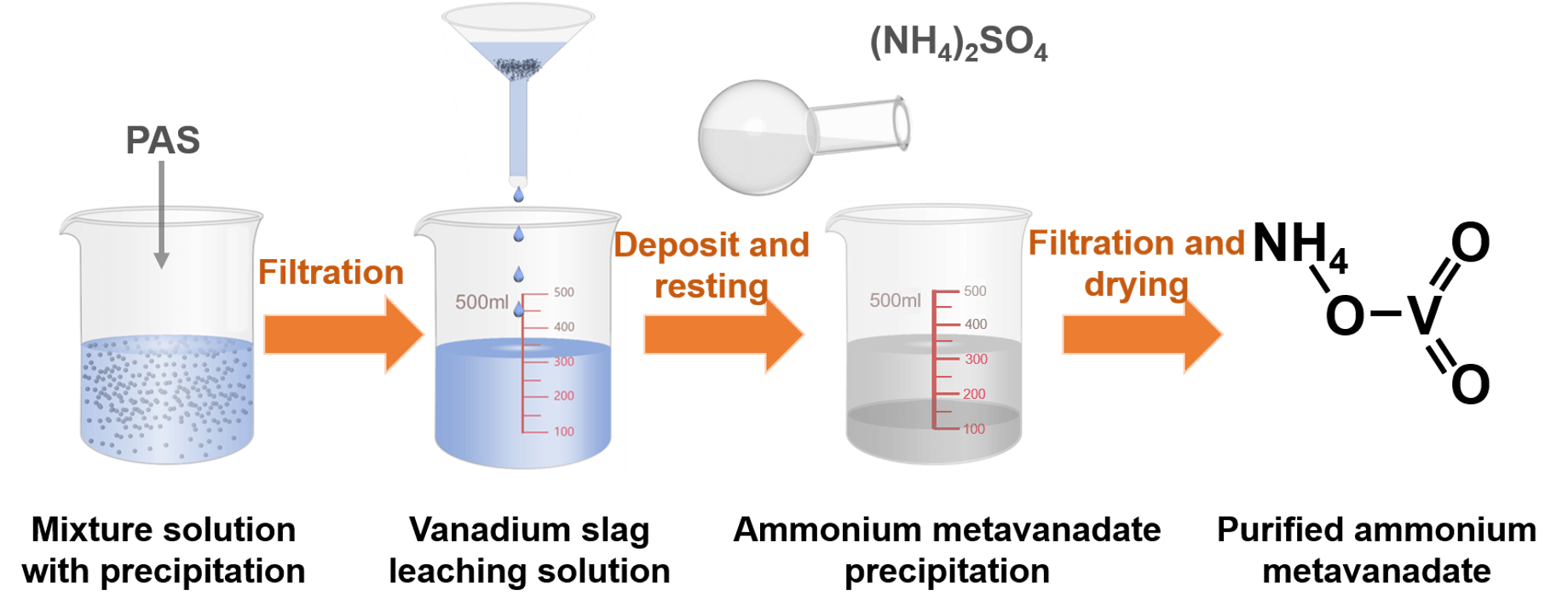 Open Access
Open Access
ARTICLE
Ammonium Metavanadate Fabricated by Selective Precipitation of Impurity Chemicals on Inorganic Flocculants
1 Shandong Aluminum Industry Corporation Limited, Zibo, China
2 Petroleam & Natural Gas Transport Corporation of China, Wuhan, China
3 School of Chemistry and Chemical Engineering, Hubei University of Technology, Wuhan, China
4 School of Physics, Huazhong University of Science and Technology, Wuhan, China
* Corresponding Authors: Dandan Zhu. Email: ; Lihua Qian. Email:
Journal of Renewable Materials 2023, 11(4), 1951-1961. https://doi.org/10.32604/jrm.2023.025271
Received 02 July 2022; Accepted 04 August 2022; Issue published 01 December 2022
Abstract
High purity ammonium metavanadate (NH4VO3) is the most vital chemical to produce V2O5, VO2, VN alloy, VFe alloy and VOSO4, which have some prospective applications for high strength steel, smart window, infrared detector and imaging, large scale energy storage system. NH4VO3 is usually produced by spontaneous crystallization from the aqueous solution due to its sharp dependence of solubility on the temperature. However, hazardous chemicals in industrial effluent, include phosphorate, silicate and arsenate, causing severe damage to the environment. In this work, these impurities are selectively precipitated onto inorganic flocculants, while the vanadate dissolved in an aqueous solution keeps almost undisturbed. Therefore, high purity NH4VO3 is produced by the crystallization from the purified solution. By screening various flocculants and precipitating parameters, polyaluminum sulfate with an optimal amount of 50 g/L, is demonstrated to selectively remove phosphorate, silicate and arsenate, corresponding to the removing efficiency of 93.39%, 97.11% and 88.31%, respectively. NH4VO3 from the purified solution holds a purity of 99.21%, in comparison with 98.33% in the product from the crude solution. This purifying technology cannot only produce NH4VO3 with high added value, but also reduce the environmental pollution of waste liquid.Graphic Abstract

Keywords
Cite This Article
 Copyright © 2023 The Author(s). Published by Tech Science Press.
Copyright © 2023 The Author(s). Published by Tech Science Press.This work is licensed under a Creative Commons Attribution 4.0 International License , which permits unrestricted use, distribution, and reproduction in any medium, provided the original work is properly cited.


 Submit a Paper
Submit a Paper Propose a Special lssue
Propose a Special lssue View Full Text
View Full Text Download PDF
Download PDF Downloads
Downloads
 Citation Tools
Citation Tools